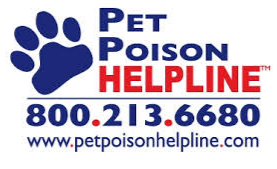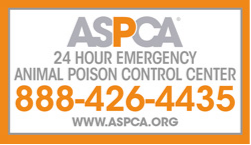Food Toxins - What's Safe To Feed Your Pet
- Animal Ark Team

- Mar 24, 2022
- 3 min read

March is Pet Poison Prevention Awareness Month and, at Animal Ark and we are focusing on four common categories of toxins in our blog! Keep reading to see what table foods are toxic for your furred or feathered friends!
Probably the most common toxic substance in our homes are methylxanthines which include chocolate, coffee and green teas. Dog’s especially are more prone to eat chocolate due to the sugar receptors on their tongues. Unsweetened cocoa powder is by far the most toxic and it is critical to get your pet treated as soon as possible if they ingest any amount of cocoa powder. From there, the most toxic is baker’s chocolate followed by dark chocolate, white chocolate and then, at the bottom, milk chocolate. The good news with chocolate is that, if caught in time, the toxicity is easily treated. Chocolate toxicity also depends on the weight of the pet. For example; your 5 pound chihuahua eating half a bag of M&M’s is much more concerning than your 150 pound great dane eating the same amount.

When we think about other toxic substances in our homes, the next most common that people think about are grapes, raisins and wine. Generally, ingesting any of these will cause kidney failure in cat’s and dog’s. Unfortunately, unlike some other substances on this list, we are unsure what chemical compound is causing the damage is unknown. What this means is that, unlike with chocolate where the safety range for your pet can be calculated based on weight, eating even one grape can be toxic for any size animal.
Found primarily in sugar free gum and sugar free peanut butter, xylitol is the next substance on our list. This sugar substitute, in addition to spices like cinnamon, can cause vomiting and hypoglycemia leading to liver failure and, unfortunately, death. It is important to check your peanut butter jar for xylitol if you are giving it to your pet. It is also important to look at the ingredients of gourmet pet treats as many will include cinnamon and the next two items on the list for flavor.
Garlic and onions, probably two of the most common supporting ingredients in any dish, will cause destruction of red blood cells and anemia in pet’s. Like cinnamon, these are common ingredients in the flavoring of gourmet dog treats and in most chicken and beef broths. Other cooking ingredients that we use to flavor foods like potato and fresh tomatoes contain something called solanine in the potato skins and in the leafy greens of the tomatoes which can cause a range of symptoms from mild gastrointestinal upset all the way to coma in pets.

Deviating from the cats and dogs, our next toxic food is most harmful to birds. While avocado pits can present the issue of a dog or cat getting a foreign body, for birds it is extremely lethal and can cause irreversible damage to the heart.
Just like humans can be lactose intolerant, cats and dogs are as well. They lack the ability to produce an enzyme called lactase which is required to break down the lactose in milk products. While it is very common for us to want to give our new kittens whole milk it can cause gastrointestinal symptoms like diarrhea since they are unable to process it.
Rounding out our list is macadamia nuts which most people will use when baking. Macadamia nuts, like many other things on our list can cause general gastrointestinal upset, depression, weakness and hyperthermia.
As with any ingestion of an inappropriate food item, it is important to contact your veterinarian immediately for further instructions. If you believe that your pet may have ingested a toxic substance, contact Pet Poison Helpline at 855-764-7661 or the ASPCA Poison Control at 888-426-4435 followed by your veterinary hospital or an emergency veterinarian.




Veterinary Compounding provides personalized medication for pets.